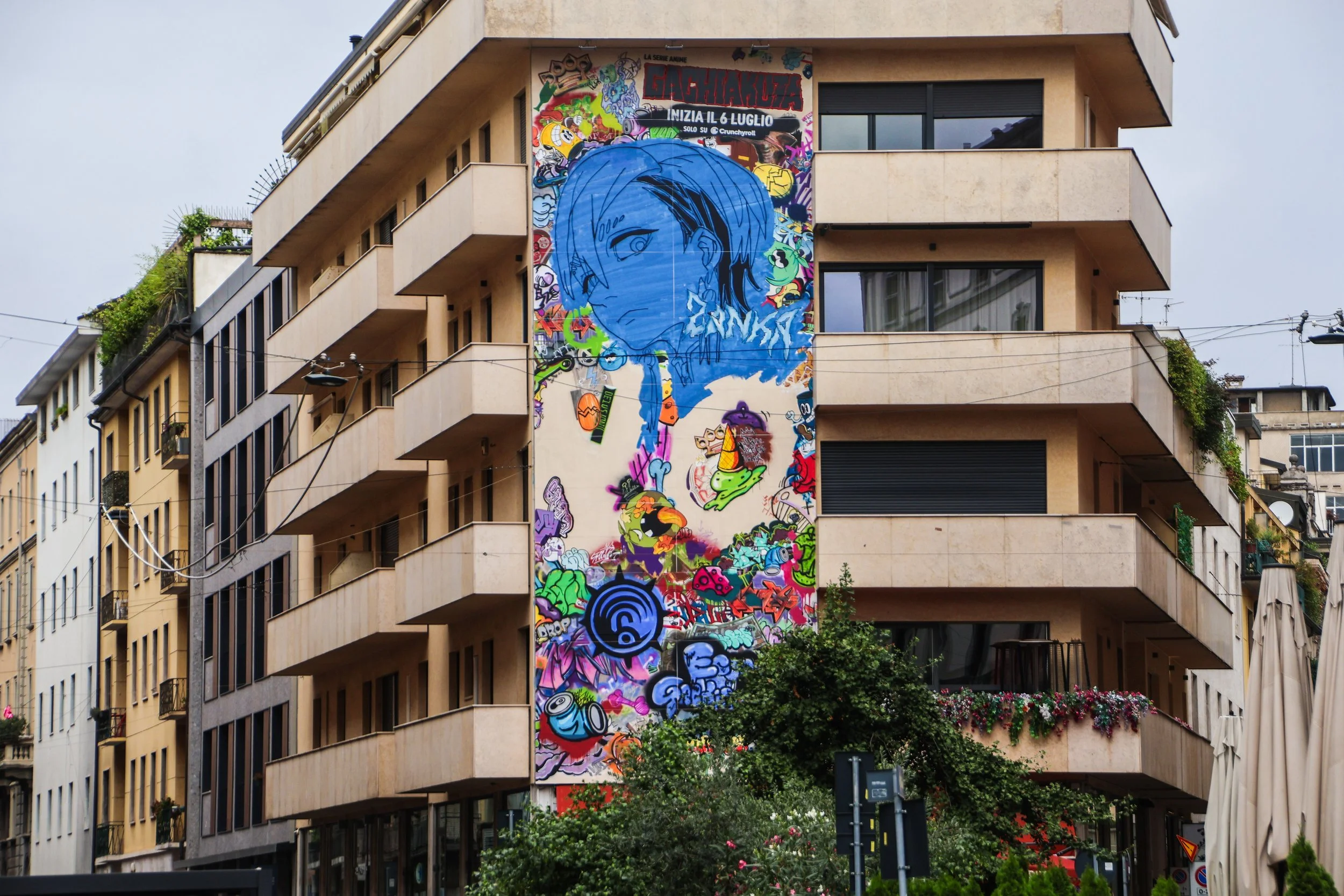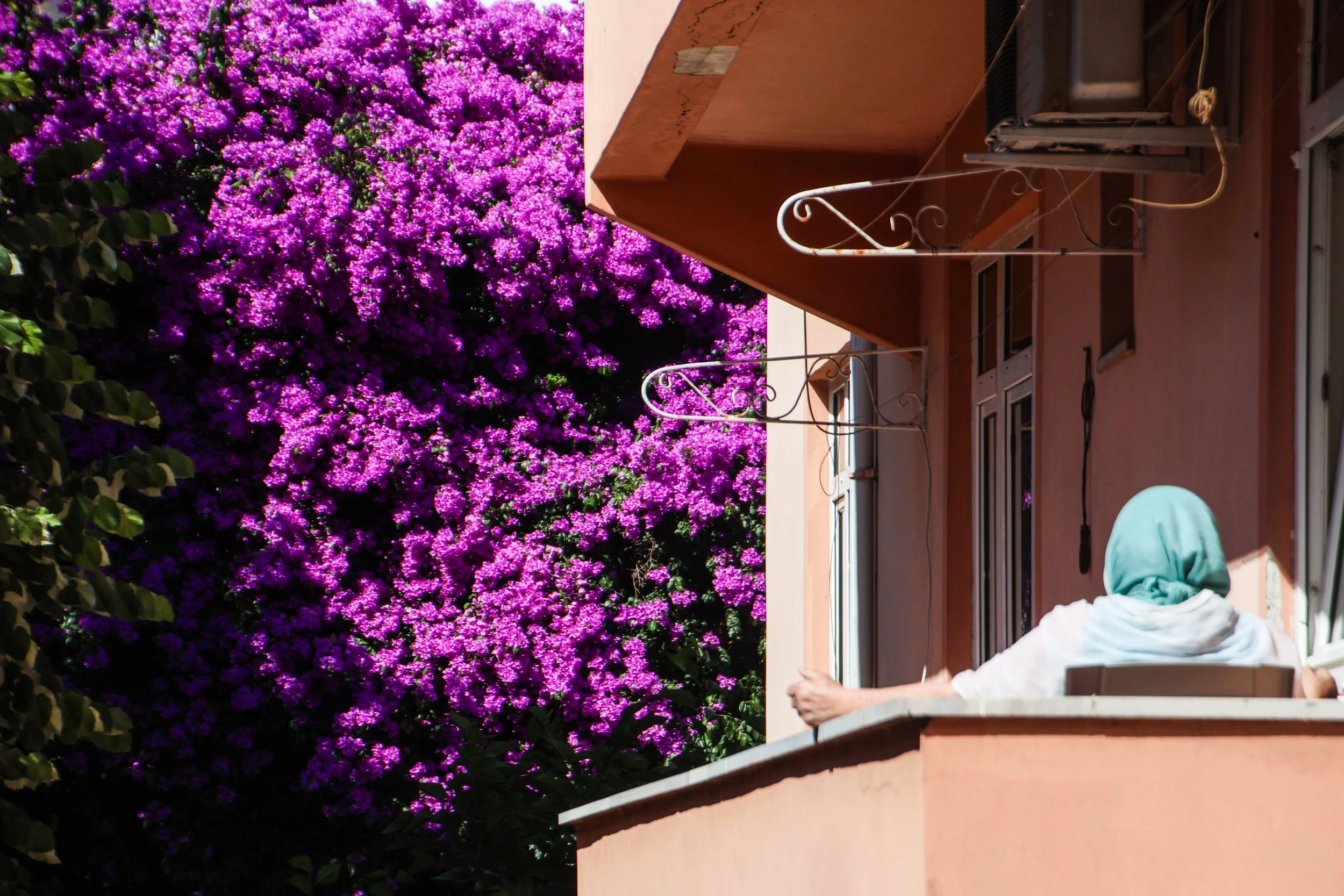And we’re closing our time in Milano with a street art feature! On this trip I did not find nearly the quantity that I have in some of the other articles on street art, but the quality of what I did find was high enough that I decided these murals deserved their own space. That being said, the mural map of Milan that I found on streetartcities.com suggests I may have missed some really good ones along the way, but that’s okay. I’ll be back!
Viewing entries tagged
30-11
During my first visit to Milan, I had the great privilege of locals taking me under their wing, which is always a game-changer when exploring a new place. Dropping into communities that already exist and riding the coattails of their intuitive understanding of their home really gives you a feel for what life in a place is really like—but it also relieves you of having to think about where exactly you are in the city at any given moment. As a result, you’ll walk away with a strong emotional bond to a city, but not much concrete information about it. That was my challenge in returning to Milan. So I did the legwork of sifting through exactly where I was during my first visit to Milan, and came up withe two neighborhoods that made the biggest impression on me. They were Brera and Navigli. Let’s jump in.
Milan (or, in Italian, Milano) is not a city that is known for its beauty—at least not within Italy. But I never thought this was fair. Yes, Milan prioritizes function over form, and is more of an industrial hub than any other city in Italy… but the rest of Italy sets an extremely high bar for what it means to be a ~beautiful city. In most other countries, this would be considered an absolutely gorgeous city, but when you’re competing with Rome, Florence, and Venice… yeah, it’s going to be a losing battle. But comparison is the thief of joy, and Milan is still quite beautiful in its own rite! More to the point; it will give you a better window into what everyday life looks like for Italians much better than Venice or Florence ever could. This is real life, and—to me—real life in Milan looks pretty damn good.
Duomo di Milano is arguably the center piece of Milan, and the plaza bearing its name—Piazza del Duomo—sits at the center of “Central Milan”. We’ll branch out to other parts of the city in forthcoming articles, but today, we’re only going to focus on the comings and goings of this little area.
As we all know, the streets of Paris are famously beautiful. But what you might not know is that just a few meters below these charming bistros and boulevards lays hidden a labyrinth of dark tunnels containing somewhere in the vicinity of 6 to 7 MILLION skeletons. These are the catacombs of Paris, and today—in the spirit of Halloween—we’re going down there. 🎃
Istanbul’s mild climate, abundant food waste, and endless dense, low-rise neighborhoods with leafy courtyards, shops, and waterfronts makes a perfect habitat for cats. The more I think about this, this would be the IDEAL setting for a Pixar movie about cats. Can we make that happen please? The writers wouldn’t even need to start from scratch, because cats here are already being actively personified, with some real instances of cats becoming famous throughout the city and beyond!
The first time I came to Istanbul—which was 10 years ago now!—I spent most of my time in Kadiköy. In the crisp autumn air, fresh off months spent backpacking through the sweat and humidity of South Asia, I was absolutely charmed by this place! It caught me completely by surprise; I didn’t want to leave! The streets were bustling with cool-looking young people, there was an amazing coffee shop on every corner, and the steep, narrow streets provided a treasure-trove of urban ocean views, similar to those of San Francisco or Stockholm.
This time around, I visited during the summer months, and Kadiköy felt different. I think both of us had changed a bit over the past decade; I’d be lying if I told you it felt familiar. Nevertheless, I retained some conceptual familiarity with this place. Far from the touristy bustle of Galata, Karaköy, and Taksim over on the “European Side,” decidedly more humble than the Westernized glamor of Bebek and Nisantası, and much softer than its hardline conservative neighbor, Üsküdar, Kadiköy managed to feel at once both comfortable and local. It’s likely still too Western to truly be considered representative of Türkiye or even Istanbul as whole… but this is where a more local and authentic version of Istanbul feels accessible to me.
So let’s breakdown both Kadiköy and Moda; they aren’t exactly the same place.
In positioning Üsküdar right after Bebek in this series, I’m hoping to give you a bit of whiplash. If you’re not reading these in chronological order, I’ll fill you in: Bebek is an affluent, socially progressive community on the northern (European) banks of the Bosphorus. There’s a gorgeous promenade where you can walk along the banks of the Bosphorus amongst fashionable people who seem—at first glance—to be quite Western! But make no mistake: Türkiye is not the West. Places like Istanbul can be confusing, because they often present as very European, but if you dive just a bit below the surface, you’ll discover a world that is quite unfamiliar to Westerners. This is a complicated place, because it contains both realities in parallel. We’re going to use Üsküdar as a vehicle to explore the more culturally conservative side of Istanbul.
Today we’ll explore few key areas from what is locally known simply as “The European Side”. Istanbul straddles a natural strait called the Bosphorus, which is the official boundary between Europe and Asia. The “European Side” of Istanbul—which is divided into two parts by an offshoot waterway of the Bosphorus called the “Golden Horn”—is decidedly more touristy than its Asian neighbor. The two pieces of the European Side that sit on either side of the Golden Horn are the Historic Peninsula (also call the “Fatih” or Old City) to the south, and Galata–Beyoglu to the north.
It’s a bit hard for me to disentangle Oxford the school from Oxford the town. They are inextricably linked and have developed co-dependently throughout the centuries. The University of Oxford was actually founded in 1096. 🤯 This is so long ago that the exact date is actually unknown! To give you a bit of perspective, that makes Oxford older than the Aztec Empire, Genghis Khan’s founding of the Mongol Empire, Kublai Khan’s founding the Yuan dynasty in China, The Crusades (which saw the sacking of Constantinople), and the Magna Carta.
We’ll pick up where left off at the end of the previous article on Hondarribia: on the ferry across the Bay of Txingudi, crossing from the Spanish side of Basque Country, to the French side. Our destination today is a little town called Hendaye. Pretty much the ONLY thing I knew about Hendaye when I arrived here was that is was Basque. I had long been fascinated with Basque Country, but had only ever thought about it through a Spanish context. This, however, is an incomplete picture of the Basque culture, because it actually straddles this international border in the Bay of Biscay. Both sides deserve thorough exploration… and as far as the French side is concerned… this ain’t it. Admittedly, it’s not the deepest incursion into French Basque Country, but it will hopefully provide a feel for the area.











